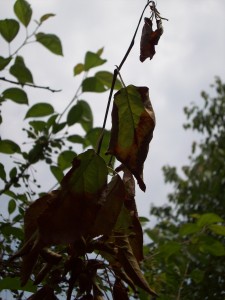

If you think your trees have fire blight but aren’t sure, the Certified Arborists at Independent Tree in Newbury, Ohio can help. What should I do if my tree has fire blight?įirst, be certain that the problem has been correctly diagnosed. While many species are susceptible, fire blight is especially damaging to apples and pears. Within the genus Prunus are apples, peaches, cherries, plums, raspberries, and other valuable fruiting crops. The rose family also includes the genera Pyrus (pears) and Prunus. Which plants get fire blight?įire blight affects a lot of plants in the rose family (Rosaeae) which, as you probably guessed, includes roses. If you plan to plant an apple tree, look for disease-resistant varieties (see the list later in this article).

Many types of apple trees are susceptible to fire blight. Once a tree is infected, a single canker can produce millions of bacteria that can spread to nearby susceptible trees and plants.Īlthough fire blight cankers can overwinter and become active the following spring, it is the new growth and flowers on trees that are most damaged by the bacterium’s rapid springtime spread. Pollinators that carry the bacteria from flower to flowerįire blight can also be found in old, mummified fruit that is left on the tree or that falls to the ground.Pruning cuts when the cutting blades aren’t disinfected between cuts.Spray irrigation that waters affected trees and shrubs.Rainfall that splashes bacteria onto nearby leaves, particularly during a hard rain or windy conditions.Infected or dead fruiting spurs on branchesįire blight spreads throughout a tree and to nearby trees very easily.Blighted flowers and fruit that turn brown and decay.The ends of shoots, twigs, or branches are drooping or dead (they often look like a shepherd’s crook).Cankers on a tree’s bark that look like discolored or wet patches, often with areas of dead or decayed sapwood around their edges.You can identify fire blight by several characteristics: Plant Pathology 40:118-127.Image by Penn State Department of Plant Pathology & Environmental Microbiology Archives, Penn State University, įire blight is a destructive disease caused by a bacterium ( Erwinia amylovora) that thrives in the warm, humid, and rainy weather that coincides with the start of the growing season, and it is easily spread. Induction of pear blossom blast caused by Pseudomonas syringae. There are several registered trade names for products that contain streptomycin sulfate including Agri-Mycin and Harbour. Streptomycin (Group 25 fungicide) or oxytetracycline (Group 41 fungicide) applied at early bloom to control fire blight helps control Pseudomonas blossom blast.Monterey Liqui-Cop at 3 to 4 Tbsp/gal water.ManKocide at 12 to 16 lb/A before fall rains and again before spring growth starts.Kocide 3000 at 5.25 to 7 lb/A before fall rains and again before spring growth starts.Cuprofix Ultra 40 Disperss at 7.5 to 10 lb/A.Champ WG at 12 to 16 lb/A before fall rains and again before spring growth starts.Protect from frost using a variety of methods including overhead irrigation or wind machines.Ĭhemical control Resistance to the active ingredients in these products has been detected in the Hood River, OR area.The blossom blast also may resemble that caused by Botrytis. The blossom blast may closely resemble that of fire blight but is different in that necrotic tissue seldom extends more than 1 to 2 inches into the spur and never involves a bacterial exudate. Later, outer bark and some underlying tissues may wholly or partly slough away. At first, bark cankers are light brown, irregular patches on limbs. Symptoms Infection may cause blossom blast, leaf spots, dieback of twigs and spurs, dormant-bud death, and bark cankers. Less severe blossom blight-'Comice', 'Forelle', red 'Anjou', and red 'Bartlett' cultivars.Īpple is not as susceptible and generally does not need control. Severe blossom blight-'Packham's Triumph', 'Bartlett', 'Eldorado', 'Anjou', and 'Bosc'. Severe on wood-'Old Home' and Asian pear cultivars. Bacteria also produce a protein that acts as an ice nucleus, increasing frost wounds that bacteria easily colonize and expand. Once inside, the bacteria induce a watery, nutrient rich environment between the plant cells where they can multiply and continue colonization of the plant tissues. These pathogenic bacteria inject several proteins and small-molecule toxins to get past host immune mechanisms. Although the bacteria survive on the outside of the plant they must get inside and multiply in the space between plant cells (apoplast) to cause disease. Rain and low temperatures, especially frost-inducing temperatures during bloom, increase incidence of blossom infection.


 0 kommentar(er)
0 kommentar(er)
